The Formation and Growth of Collaborative Online Organizations

Jeremy Foote
Northwestern University / Purdue University
September 26, 2019

The Plan
- Overall theoretical approach
- Brief summary of three projects
- Detailed summary of ABM project
- Overall conclusions
The Big Question
Why do some collaborative online organizations succeed?
Collaborative Online Organizations (COO)
Examples



Why do some COO succeed?
Most COO do not succeed
- COO size is highly skewed, with top organizations getting most of the contributions
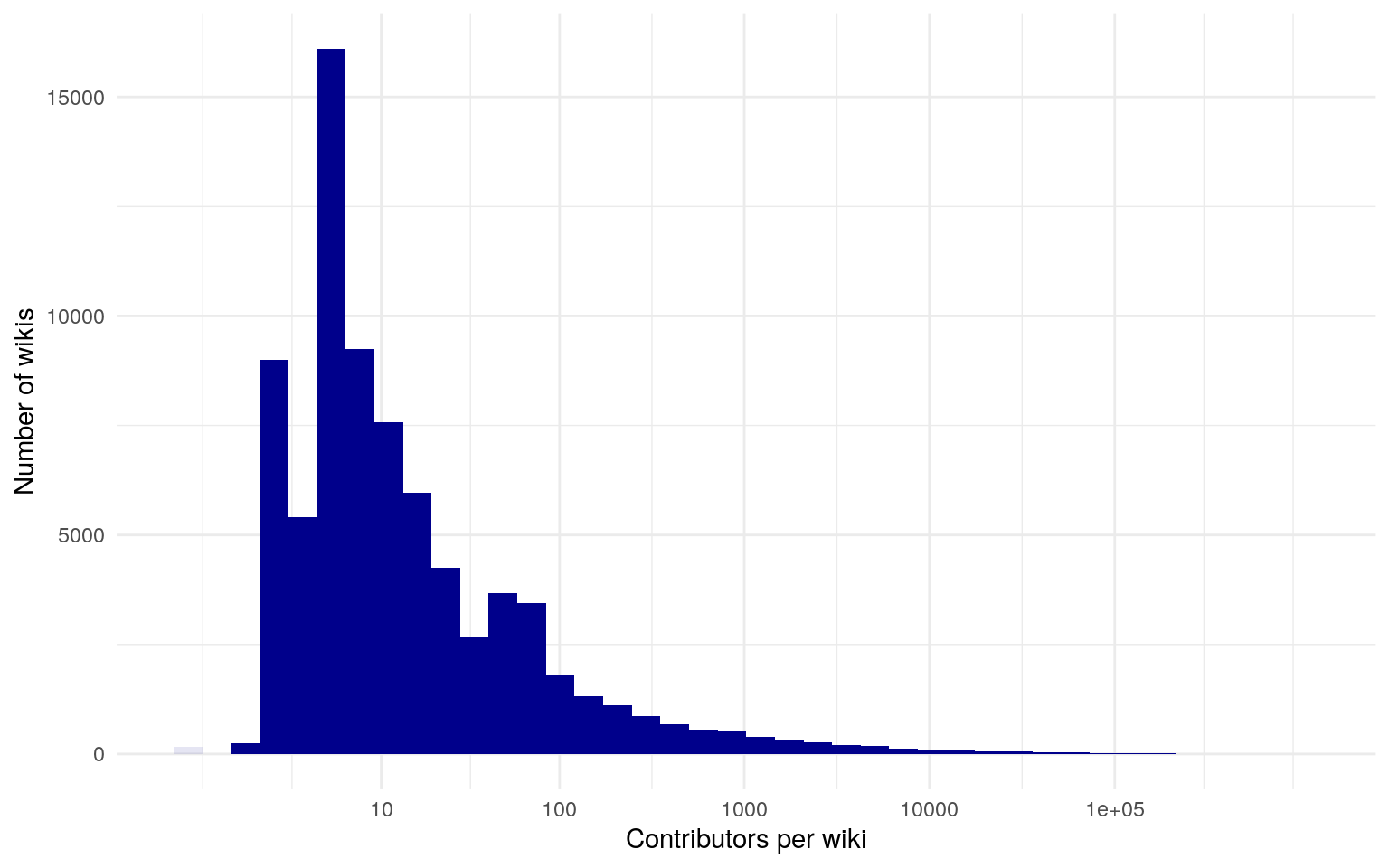
There have been three main approaches
Approach 1: Why are Wikipedia and Linux so successful?
- Why people contribute (Nov, von Krogh, Lakhani, Lampe)
- Who contributes (Antin, Shaw and Hargittai)
- How work is organized (Arazy, Butler, Crowston, Keegan, Matei, Zhu)
The weakness of Approach 1
- Selecting on the dependent variable
Approach 2: Predicting COO outcomes based on membership, structure, and design
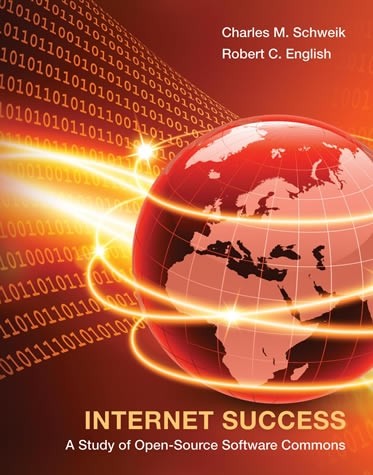
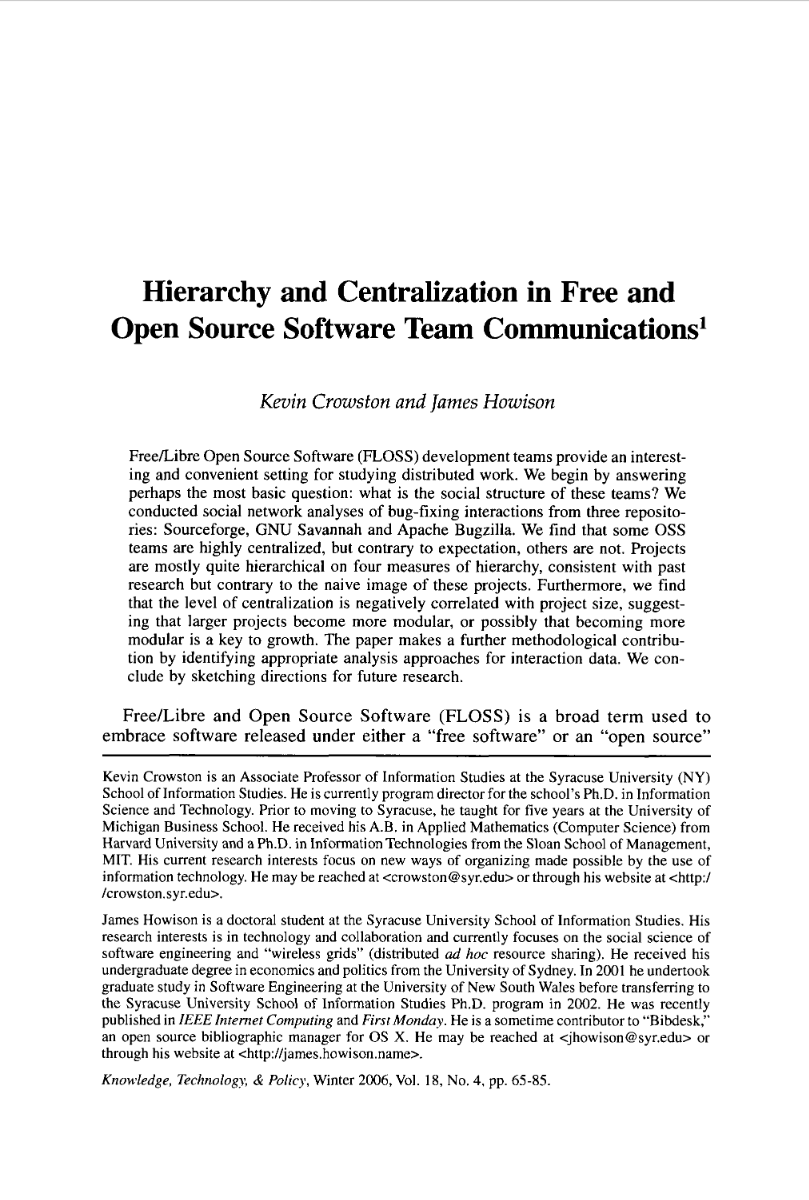
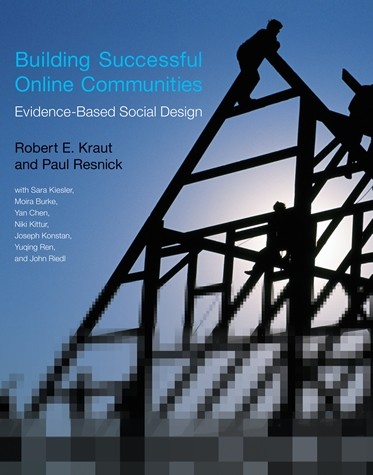
The weakness of approach 2
- Groups are not independent
Approach 3: Online Organizational Ecology predicts outcomes based on community-level relationships
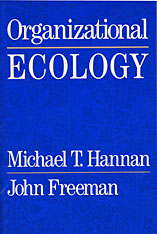
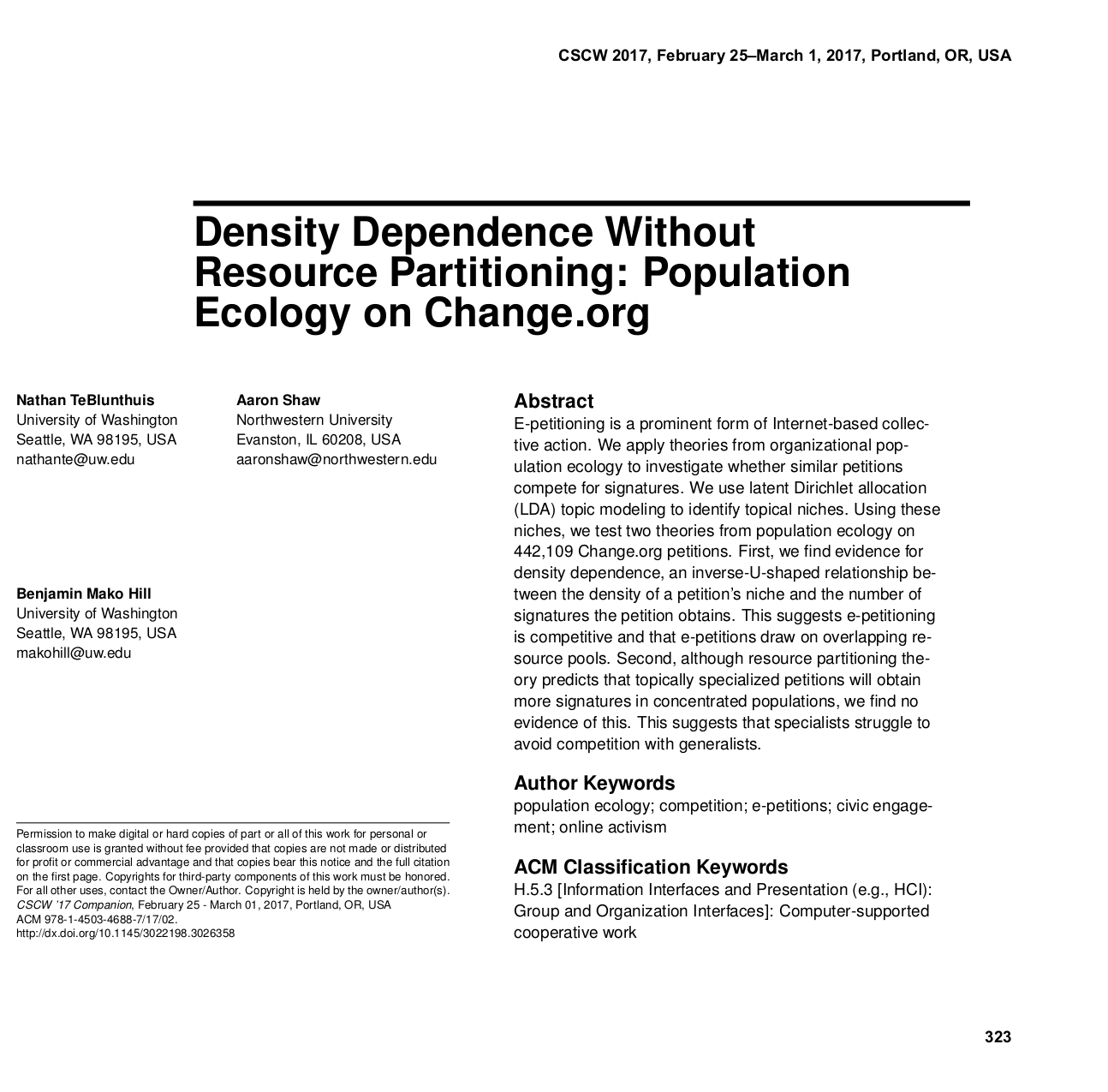
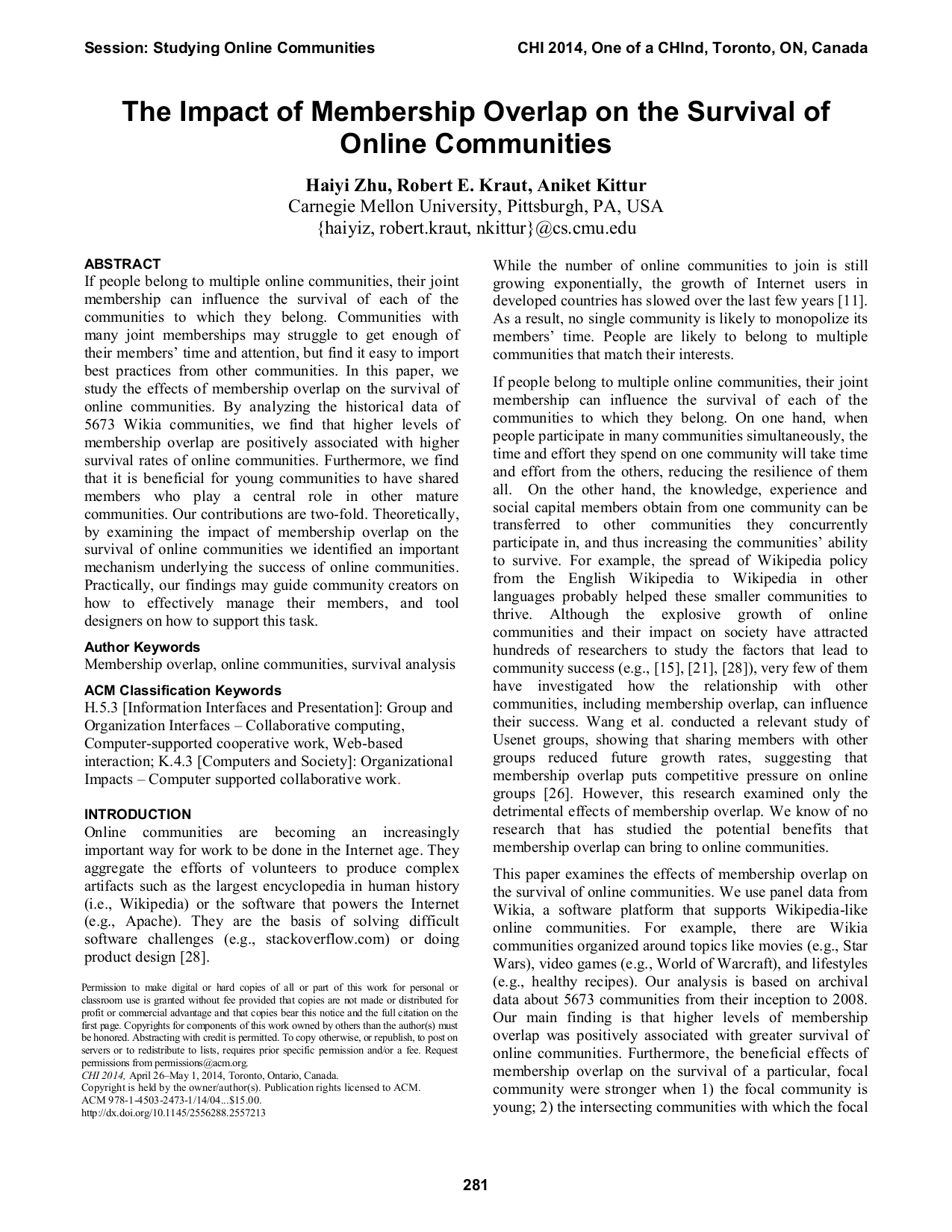
The weakness of approach 3
- Organizational ecology treats organizations as agents and people as resources
Studying organizational outcomes using individual decisions
- How do people allocate their efforts in a complex environment with lots of choices?
People are influenced by individual attributes, technology, and the state of the system
What is the “system”?
- An earlier generation of communication scholars suggested “open systems” (Katz and Kahn, 1966; Rogers and Argawala, 1976; Farace, Monge, and Russell, 1977)
- A system takes in inputs, processes them, and produces outputs
- Systems are composed of subsystems and compose suprasystems (e.g., a firm composed of departments composed of work groups)
Digital trace data lets us study the relationship between people and systems
- Earlier researchers had difficulty gathering the type of data needed for open systems approaches
- COO data is:
- Fine-grained data about behavior and interactions
- Within and between groups
- Unobtrusive
Four projects on individual decisions in new collaborative online organizations
Project 1
Early-stage communication networks and community outcomes
Integrative work groups are more productive and successful
- Many theories suggest that integrative groups with low hierarchy should be successful:
- Coordination
- Information flow (Katz, 2005)
- Transactive memory / Shared mental models (Wegner, 1985; Mathiew, 2000)
- Social Integration
- Legitimate peripheral participation (Lave and Wenger, 1991)
- Group identity (Scott, 2007)
- Coordination
Integrative structures identified with social network analysis correlate with success
- Low hierarchy, few people on the periphery (Cummings and Cross, 2003)
- High density (Balkundi and Harrison, 2006)
- Early-stage COO should benefit even more from integrative networks
Edits taken from wiki talk pages on Wikia
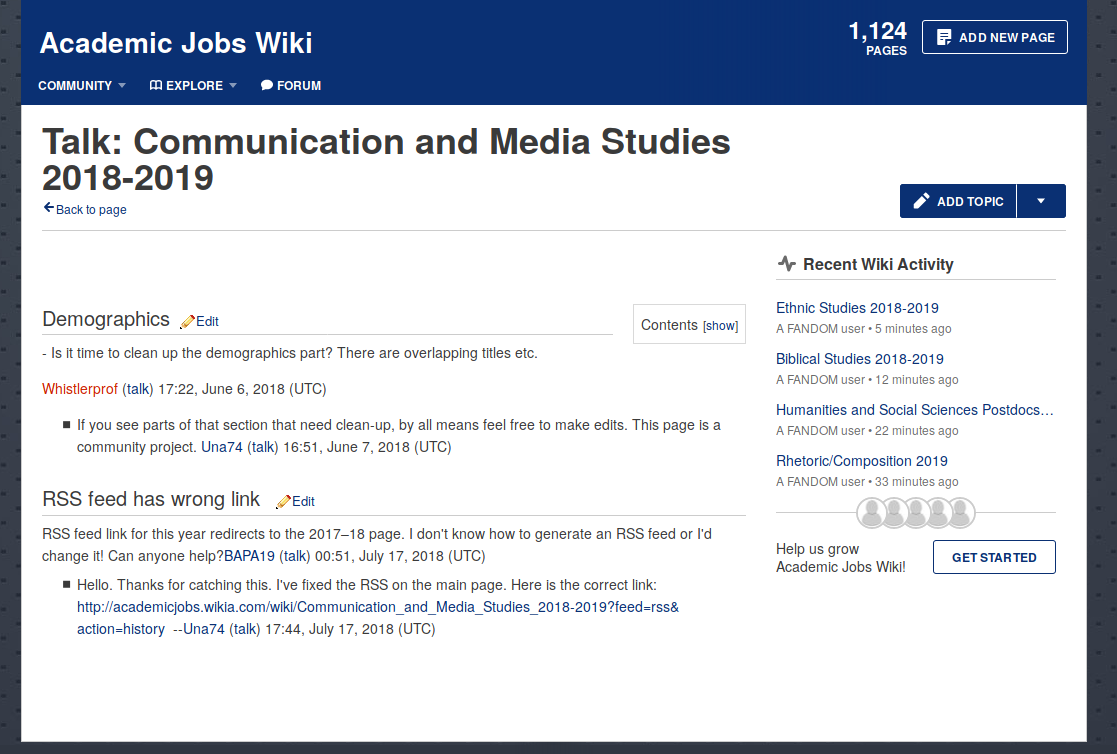
Relationships between communication structures and productivity

Bootstrapped 95% confidence interval for β coefficents
There is basically no relationship between communication structures and survival

Bootstrapped 95% confidence interval for β coefficents
Project 2
Why do people start new communities?
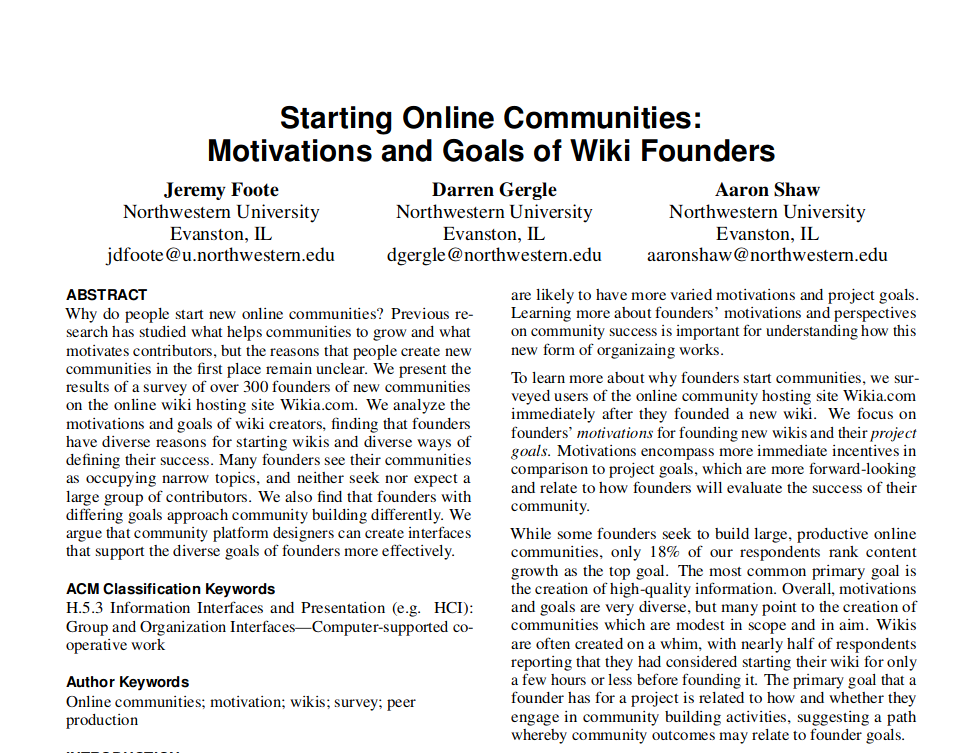
Foote, Gergle, and Shaw. (2017). Starting Online Communities: Motivations and Goals of Wiki Founders, CHI 2017
Previous research typically treats small communities as failures
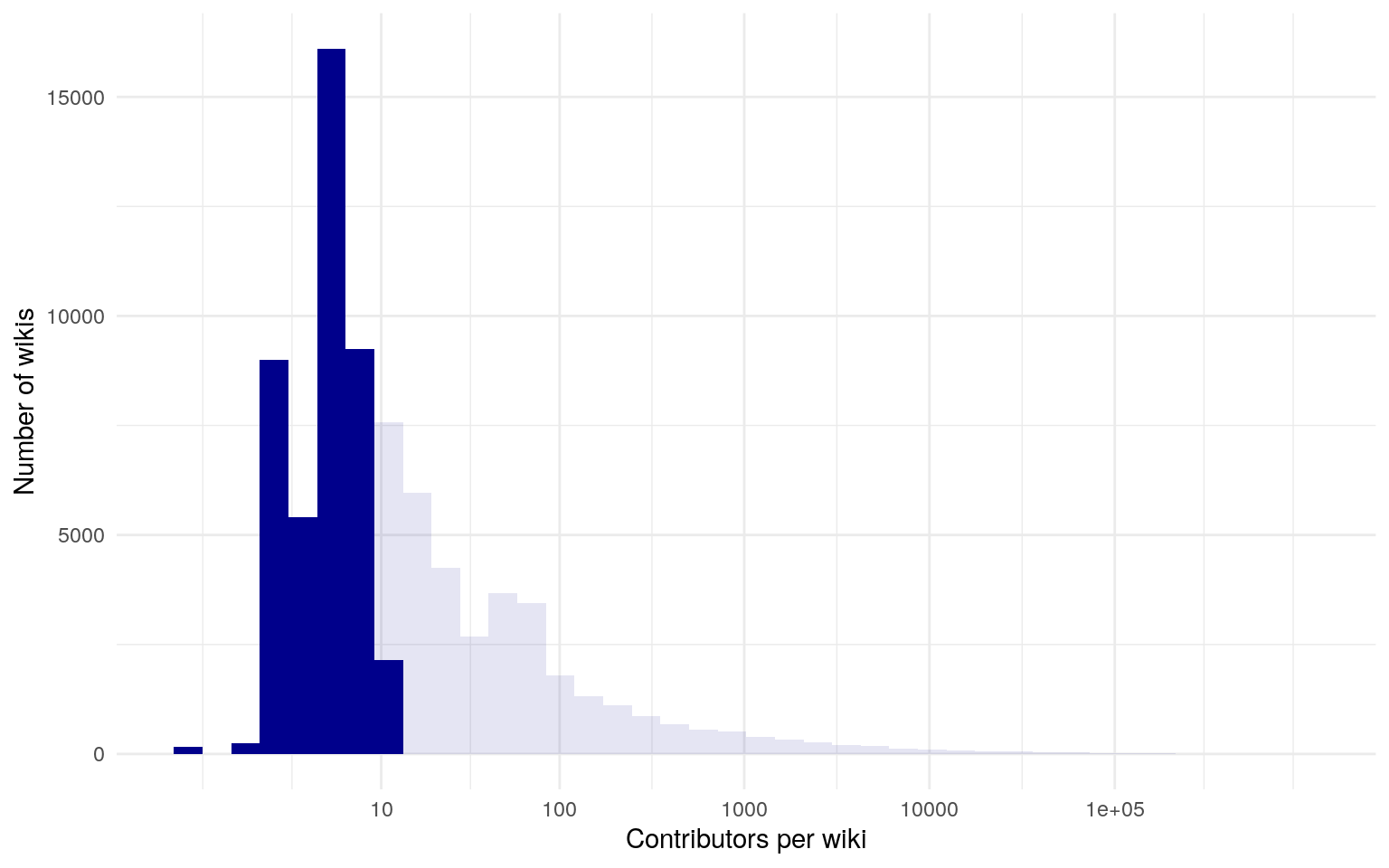
A puzzle
Why do people keep starting communities if they are so likely to fail?
Learning from founders
- 300+ founders responded about their:
- Motivations
- Goals
- Experience
Top goals
- High-quality information
- Long-lasting community
- High-growth community
Most projects are on niche topics for small communities
Projected contributors after 30 days
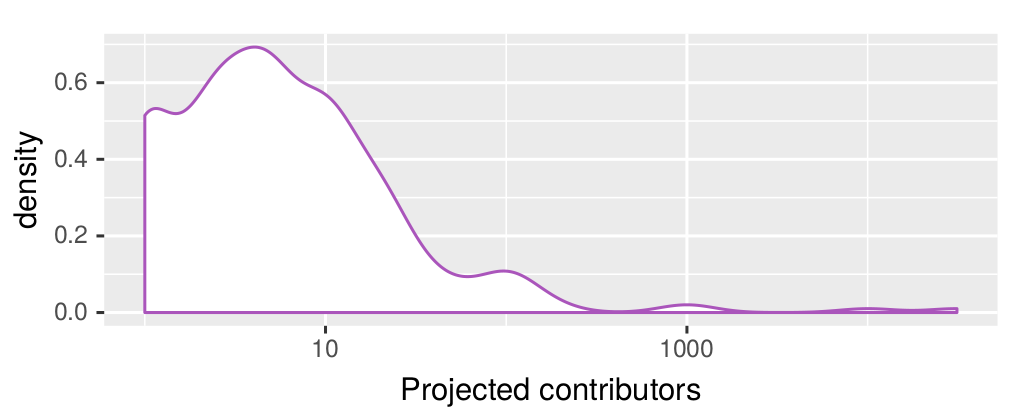
Project 3
Who starts new communities?

Foote and Contractor. (2018). The behavior and network position of peer production founders. Lecture Notes in Computer Science.
Starting new organizations
- Entrepreneurs:
- Have more diverse experience than others (Backes-Gellner & Moog, 2013)
- Are more likely to have worked with entrepreneurs (Nanda & Sørensen, 2010)
- Successful entrepreneurs:
- Have more experience (Cassar, 2014)
- Have large, diverse social networks (Stam et al., 2014)
We examined the behavior and network position of ~61,000 wiki editors
Timeline of data collection
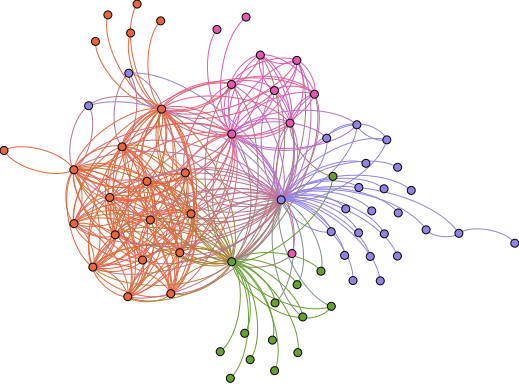 Network graph of the Spongebob wiki from Wikia
Network graph of the Spongebob wiki from Wikia
Many founders are learning the system
- Nearly 90% of wikis were founded by new users
- ~1% of existing users founded a wiki
Non-newbie founders are more active with more diverse experience, but at the periphery of social networks
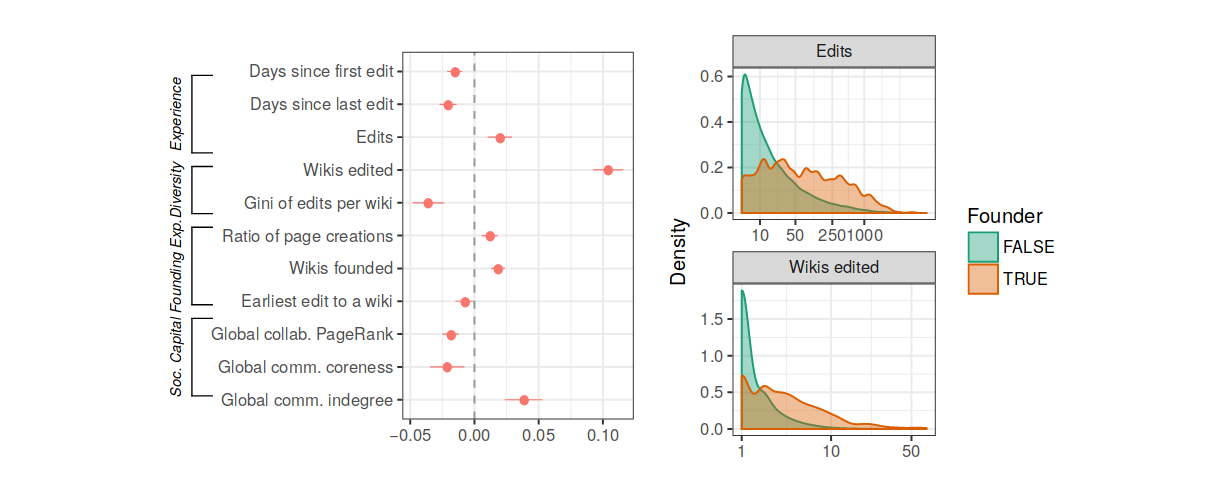
Overall, past behavior and networks have little relationship with community growth

Project 4
Social computing research theorizes that people decide to participate in a group based on expected utility
- People estimate expected utility of joining based on future activity levels (Resnick et al.)
- Join if expected benefits exceed expected costs
People are exposed to groups via social ties
- Two categories of exposure to COO (Kraut et al.)
- Impersonal exposure
- Interpersonal exposure
These theories focus on individual level outcomes
- Decision rules should predict
- Group level outcomes
- Population level outcomes
- These are rarely tested
Online group sizes have heavy-tailed distributions

Data from Stuck_in_the_Matrix on BigQuery
The number of groups each user belongs to is also heavy-tailed

Data from Stuck_in_the_Matrix on BigQuery
A simple model that produces heavy-tailed distributions
- Cumulative advantage (Merton, 1968; Barabási, 1999)
- Future activity levels are based probabilistically on current activity
Do social computing theories of exposure and participation decisions explain heavy-tailed participation?
- Possible cumulative advantage mechanisms
- Expected utility is based on current size
- Large COO have larger set of neighbors to share with
- People in many communities have access to more neighbors
Agent-based modeling
- Simplified, simulated system of interacting agents
- Allows us to:
- Explicitly model micro processes
- Test the macro-level implications of theories
Our agent-based model
- Start with \(N\) potential contributors and \(X\) potential communities
- Every month:
- Each user is presented with an “exposure set” of \(x\) communities (exposure)
- The user decides which communities to participate in (decision)
- Each user is presented with an “exposure set” of \(x\) communities (exposure)
- Every month:
- Naive versions of each theory
- Combined version
Simulation Results
Null model as baseline
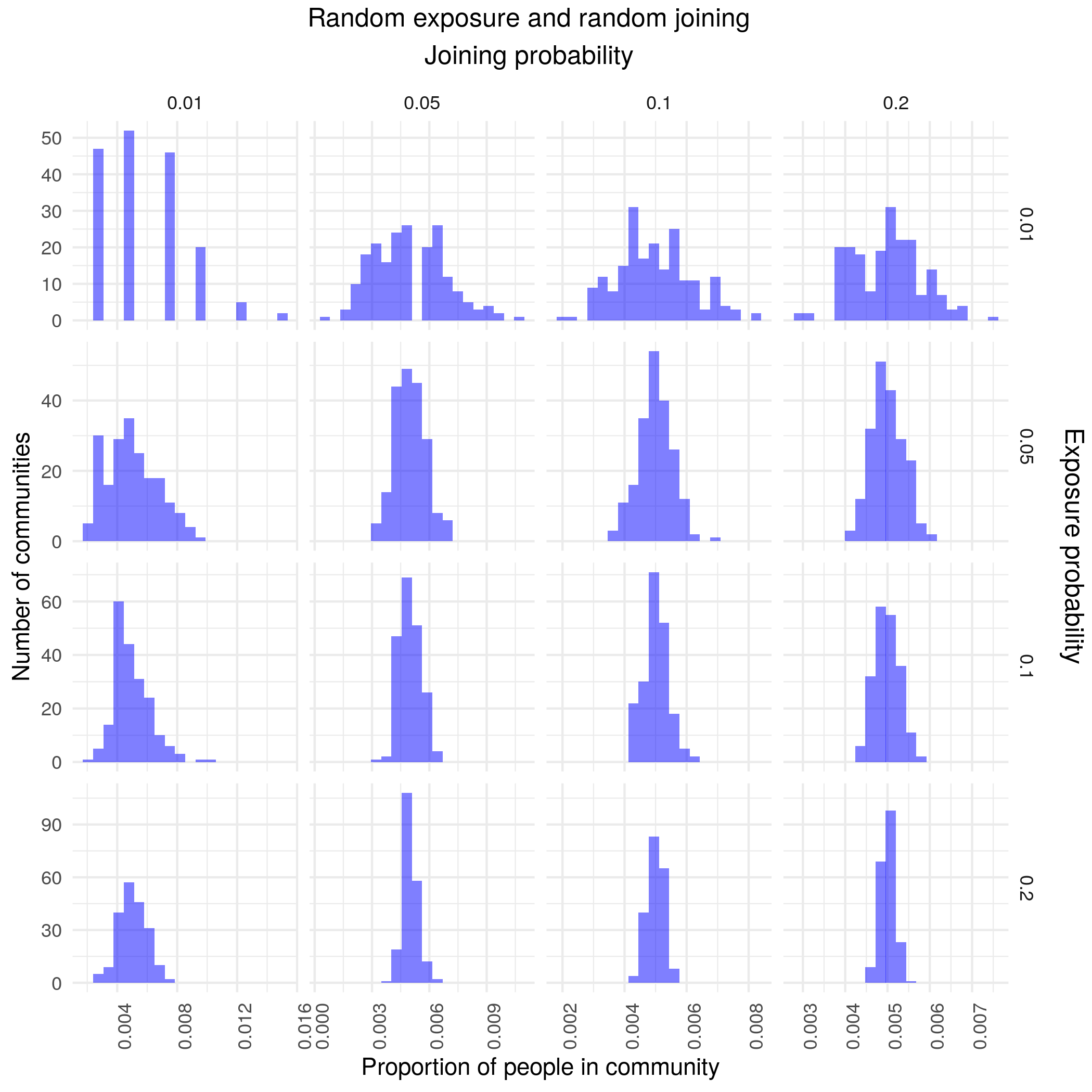
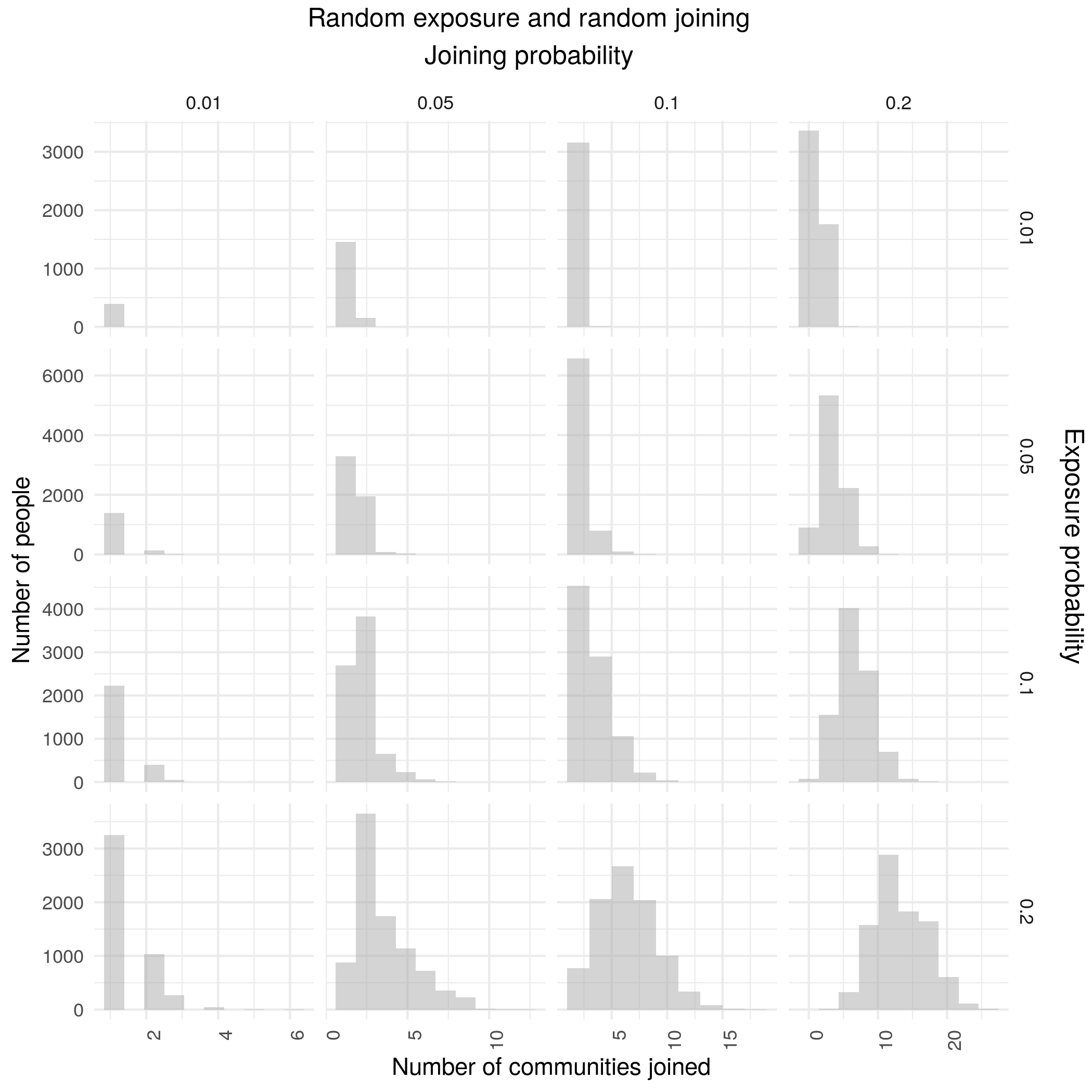
Expected utility models are skewed but not heavy-tailed
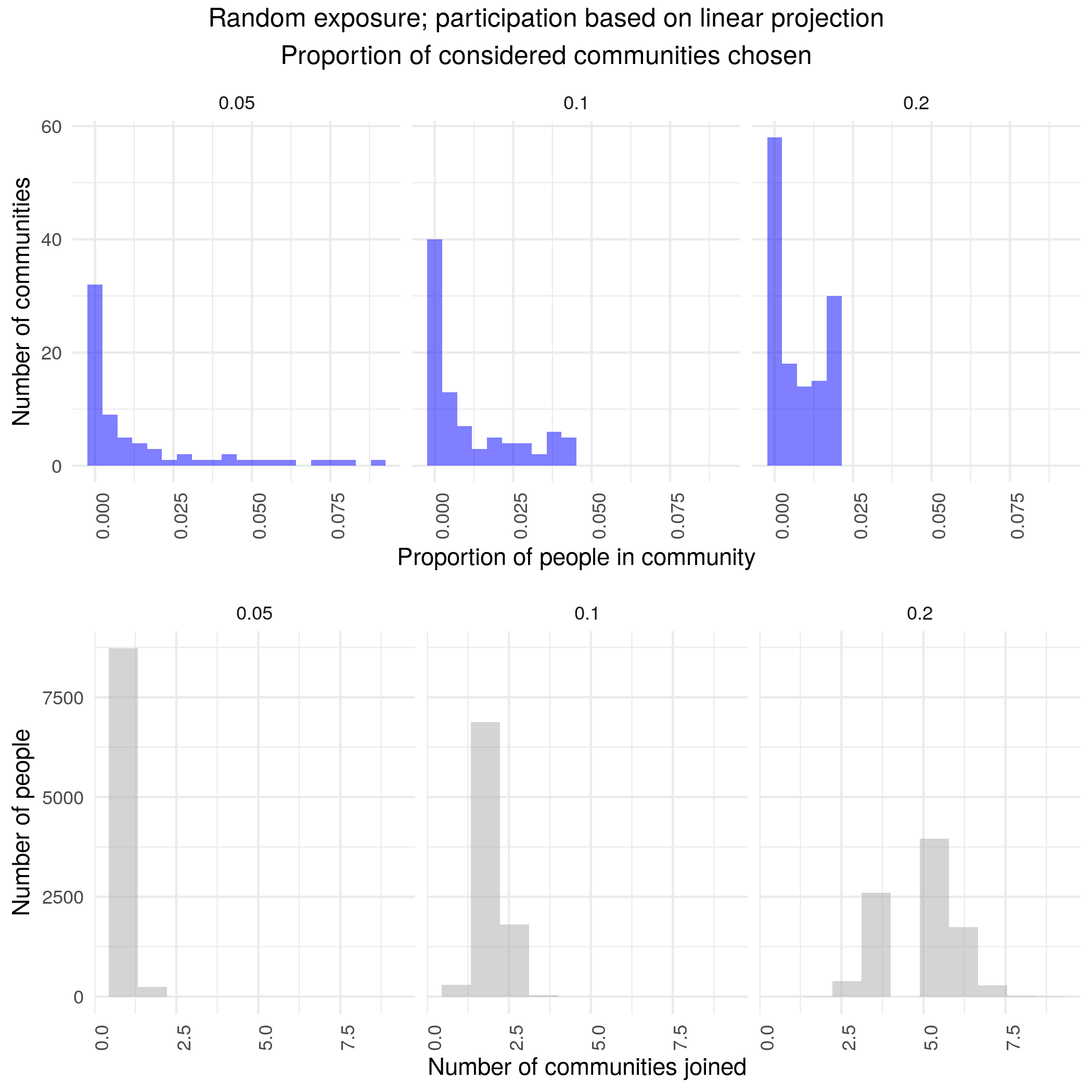
Naive versions of social exposure are not skewed
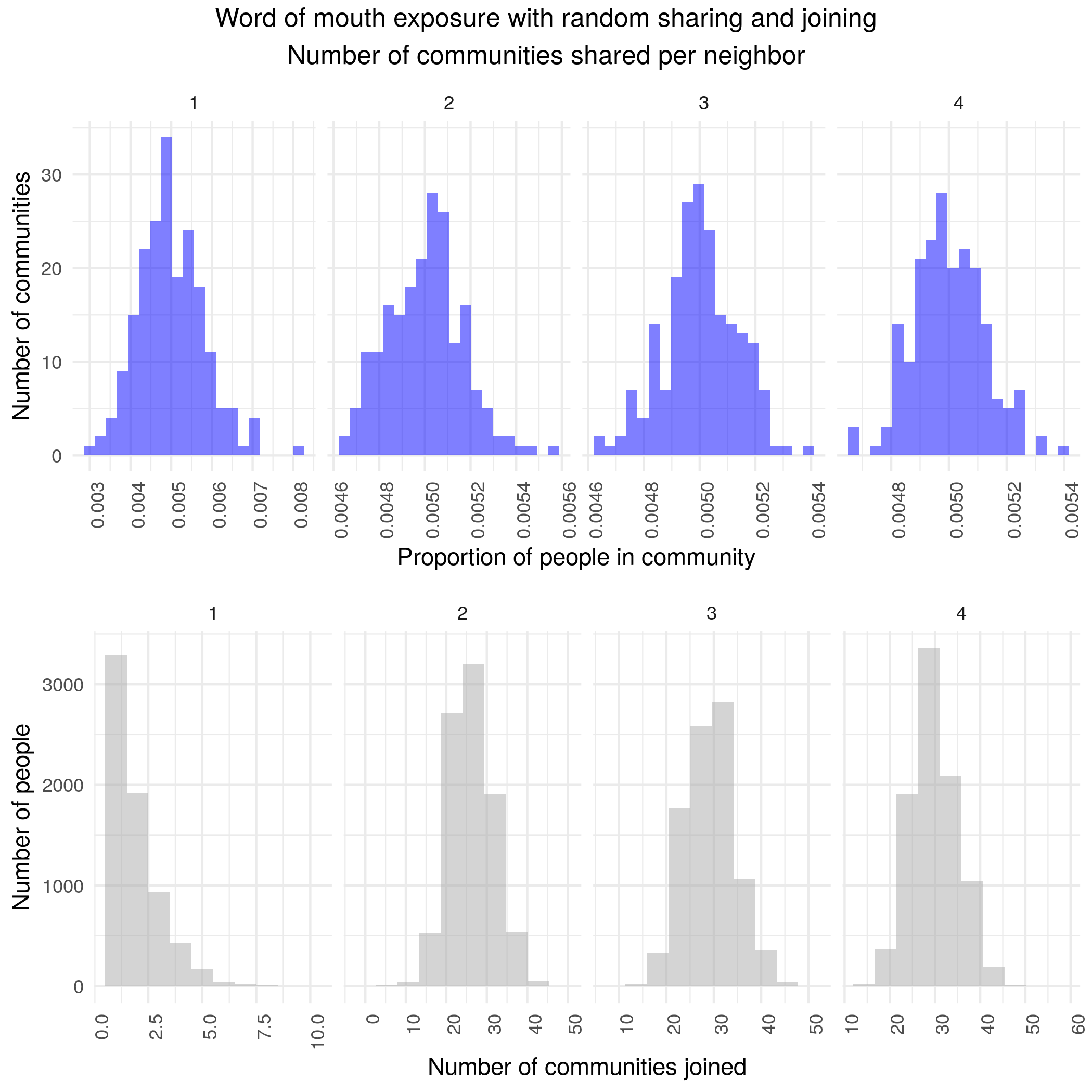
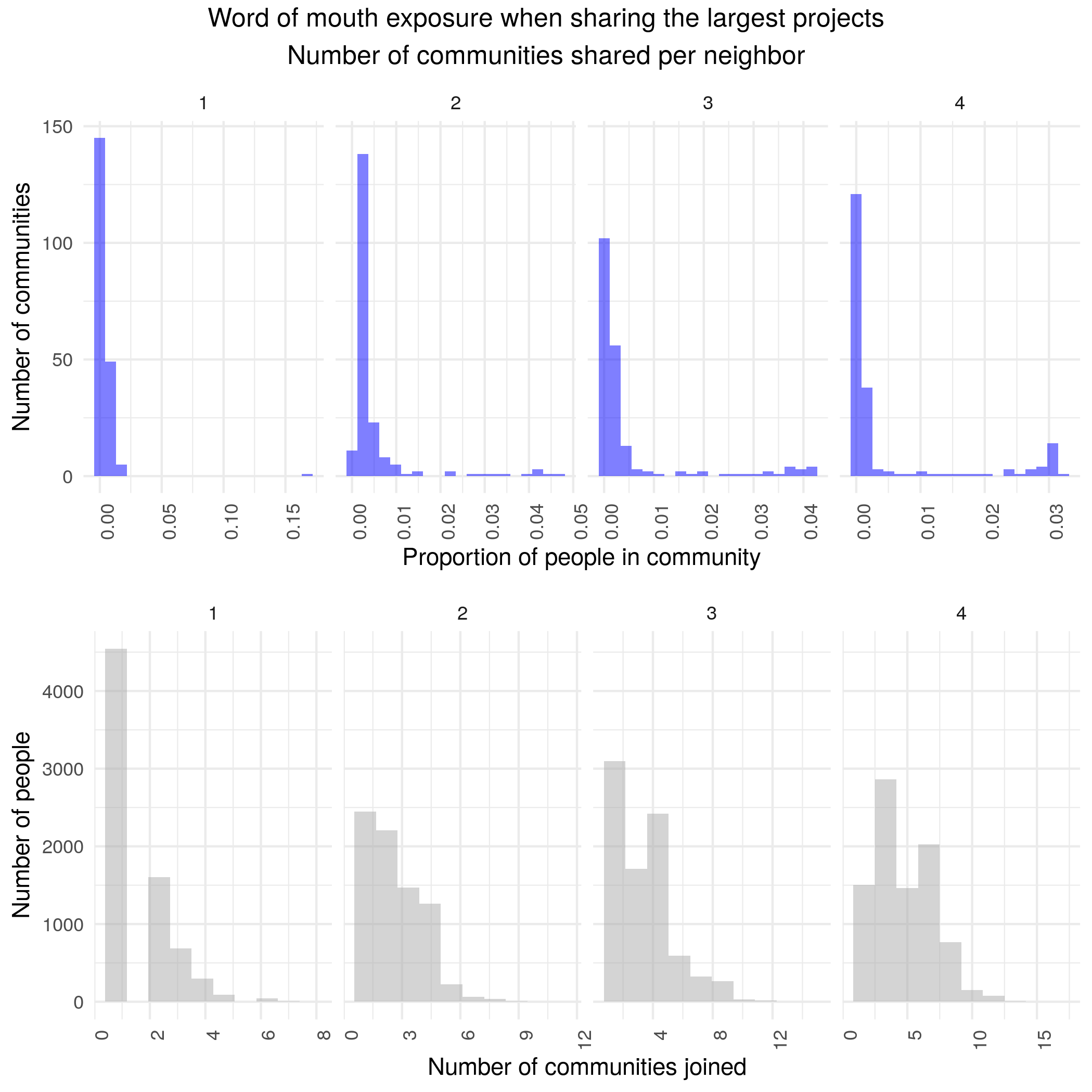
A combined version is robust with community sizes roughly similar to reddit
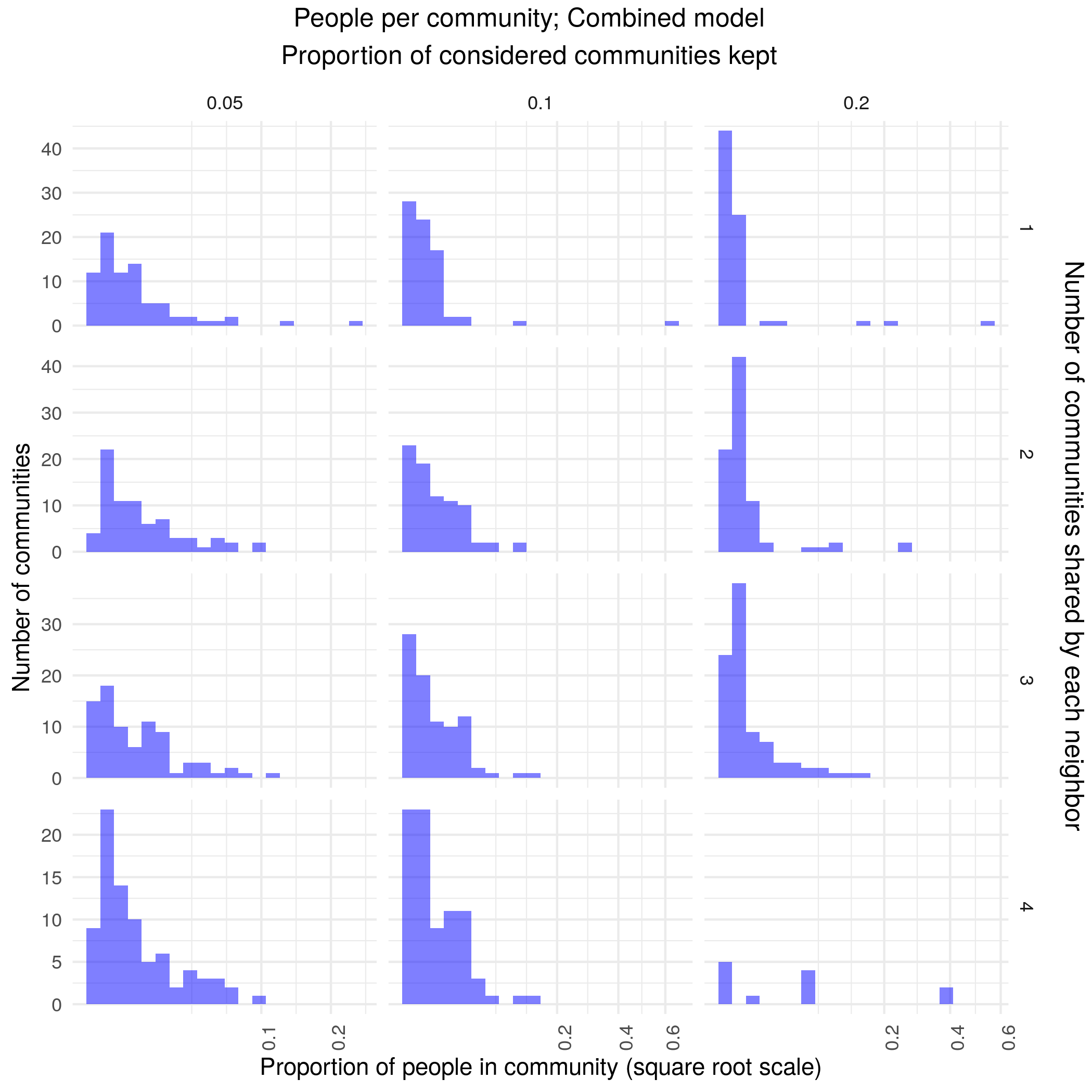
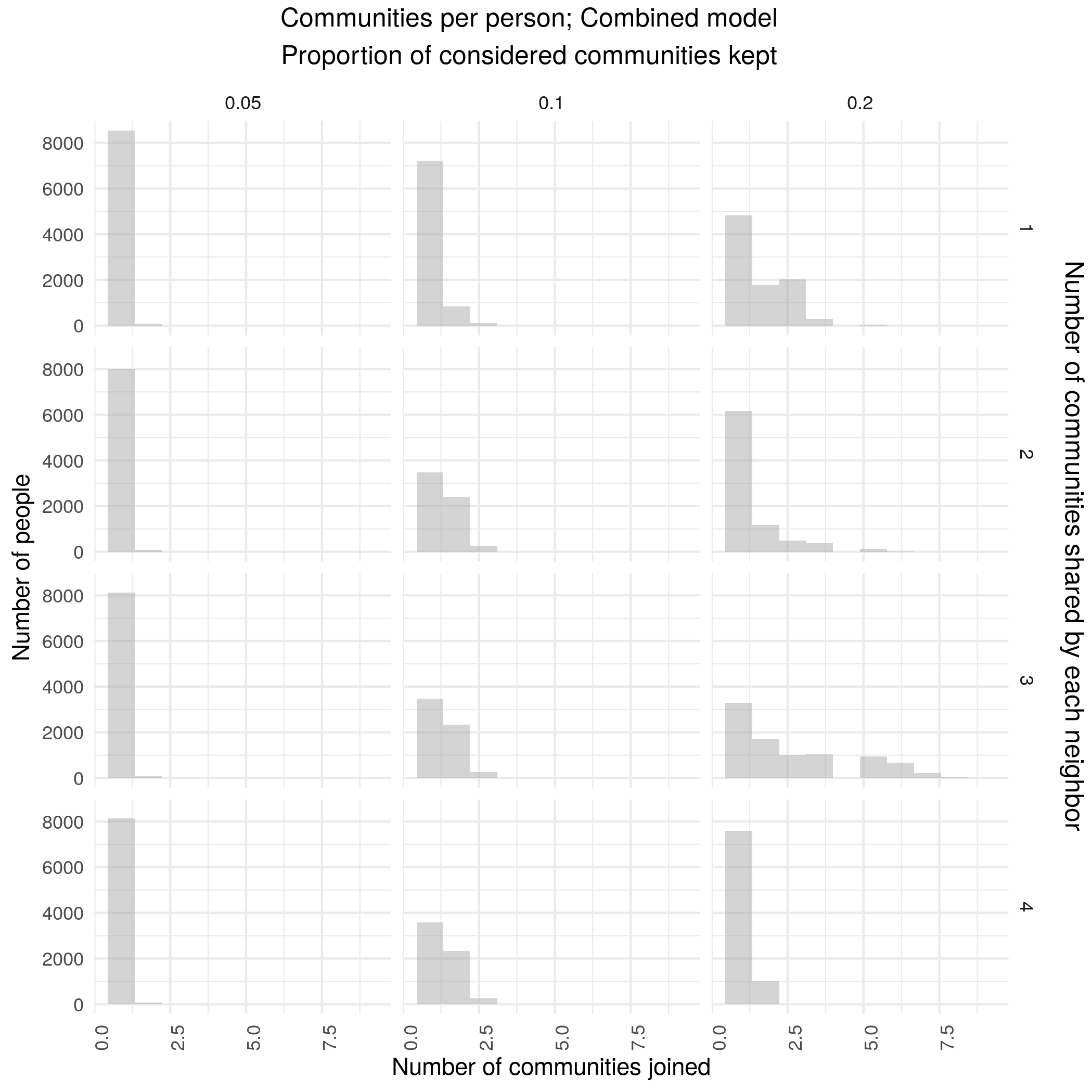
Conclusion
- Word of mouth exposure plus expected utility participation is a partial explanation for heavy-tailed community size distributions
- Two main weaknesses
- No model was as skewed at both the head and tail
- No model explained the heavy tail of participation rates
Conclusion
- Framework for theories to be informed by higher-level behavior
- Could test whether people actually share larger groups
- Are people more likely to join when they already belong to many COO?
- Simulation can enrich social computing theories
Overall Implications
Systems of COO
- Communities are interdependent
- Founders and joiners are influenced by state of other COO
- Past experience and luck can influence future behavior
- COO data can help us understand these recursive processes
Small, temporary organizations
- Most COO are intentionally small
- In aggregate, these are valuable
- Create narrow public goods without requiring oligarchy
Social motivations aren’t all that important
- Founders cared more about the artifact than the community
- New COO didn’t require integrative networks to be productive or survive
- Explanations
- Strong selection effects mean only the motivated join
- Ease of leaving means dissenters leave
Affordances matter
- Low costs to join and leave and create COO
- Porous boundaries of COO
- Also influences individuals and populations
The End
Appendix
Productivity Model

Survival Model
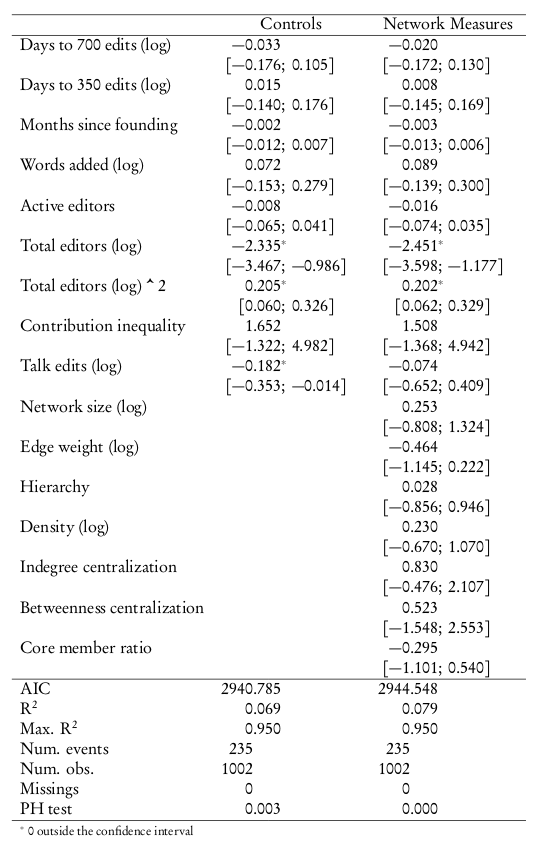
Robustness tests
Cutoff @ 500
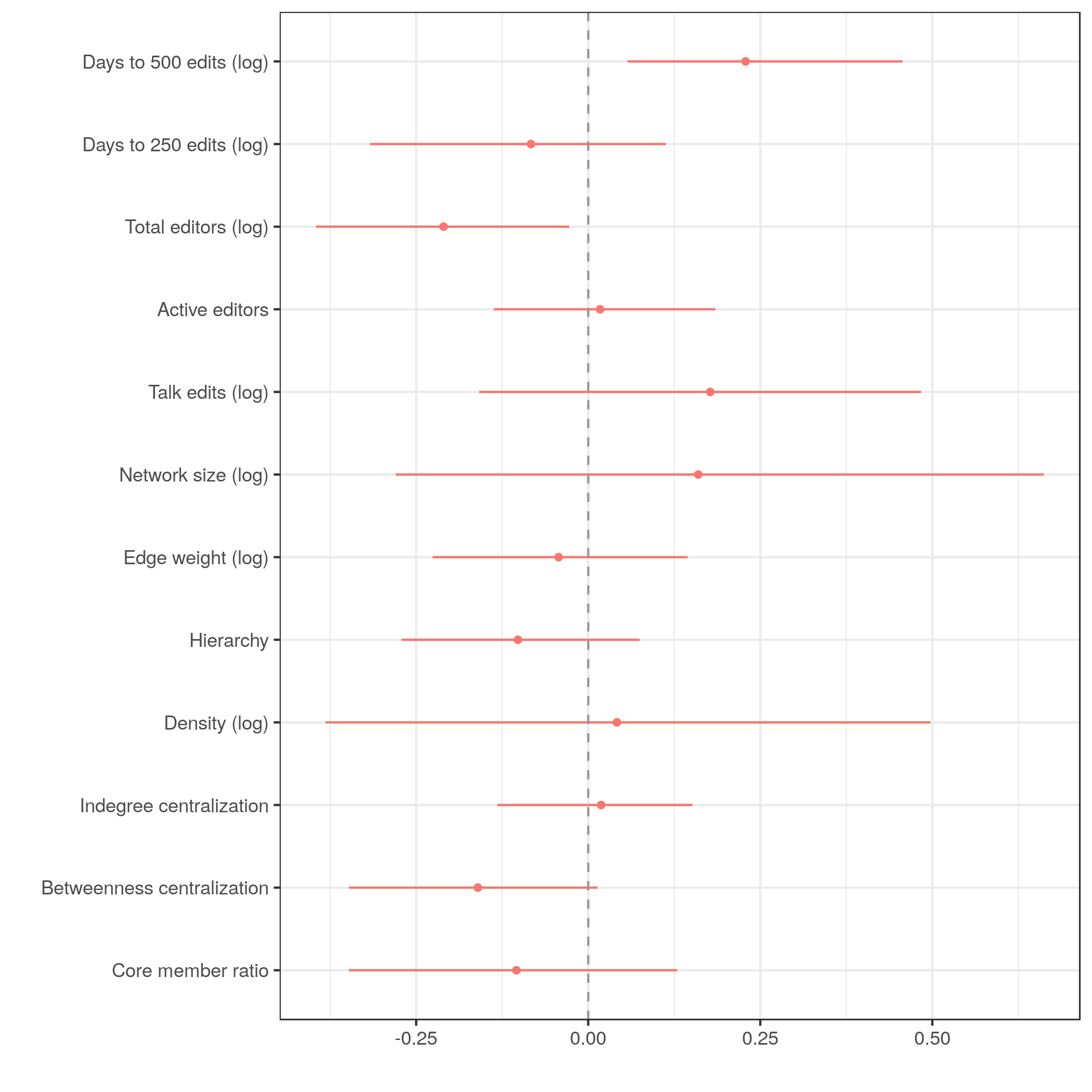
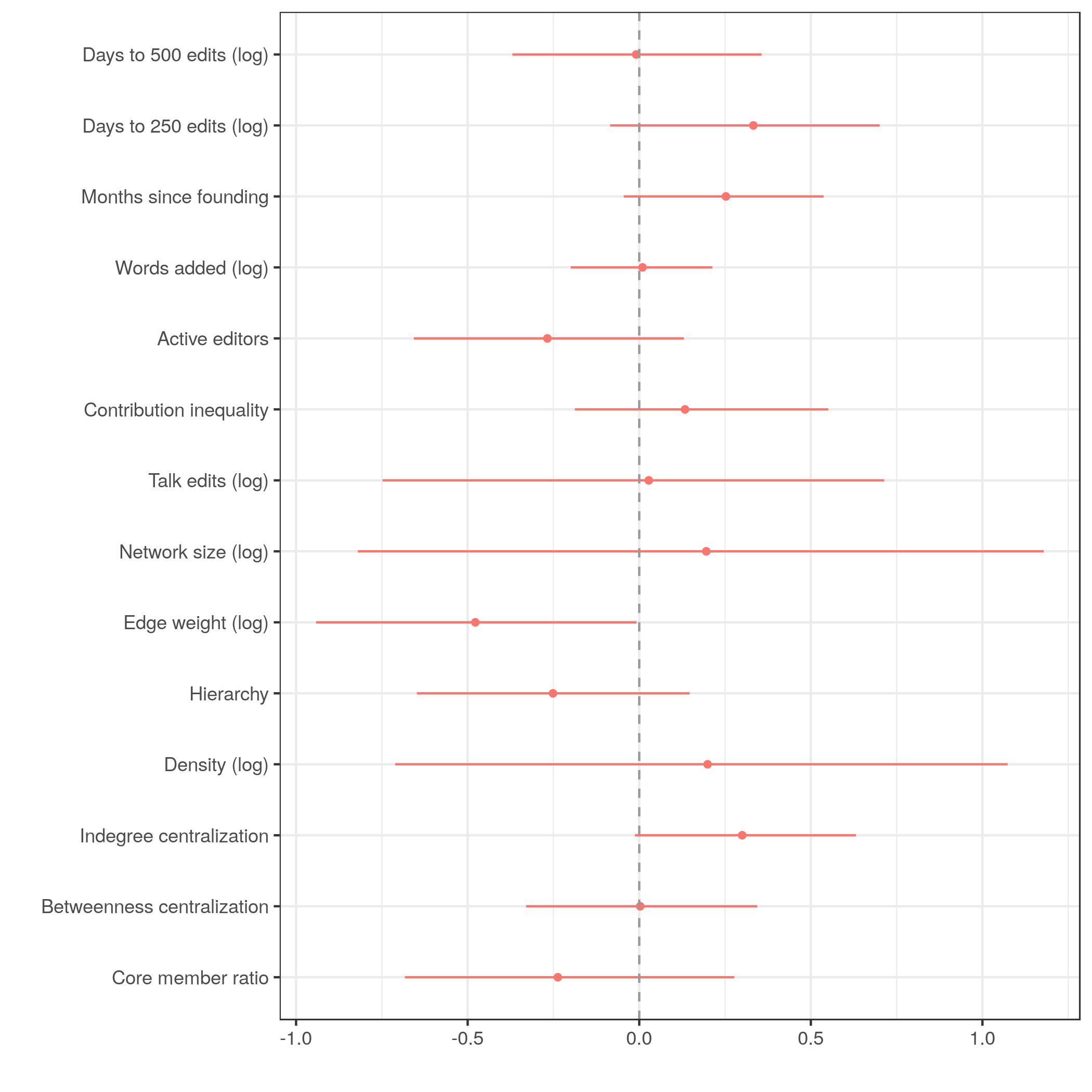
Robustness tests
Cutoff @ 900
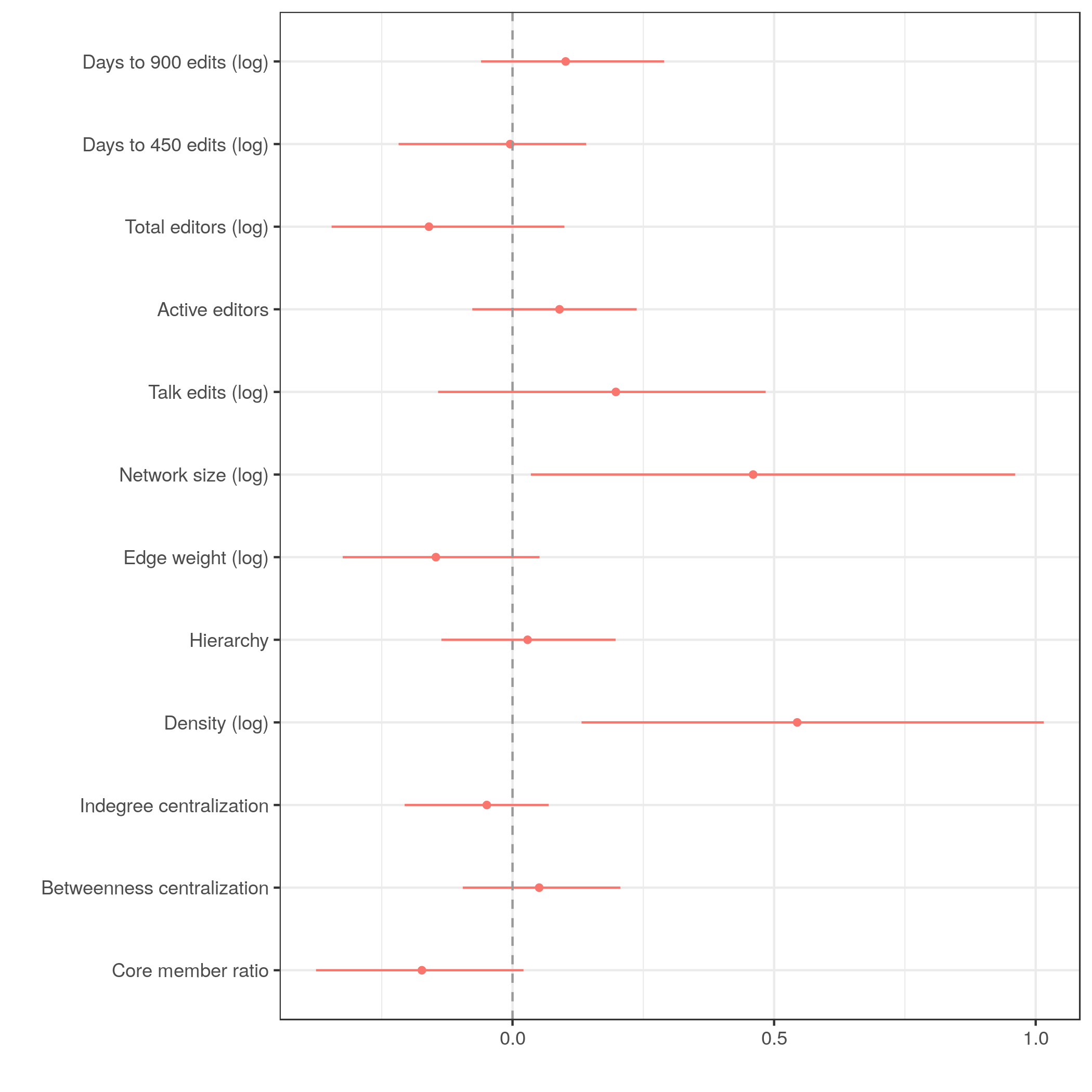
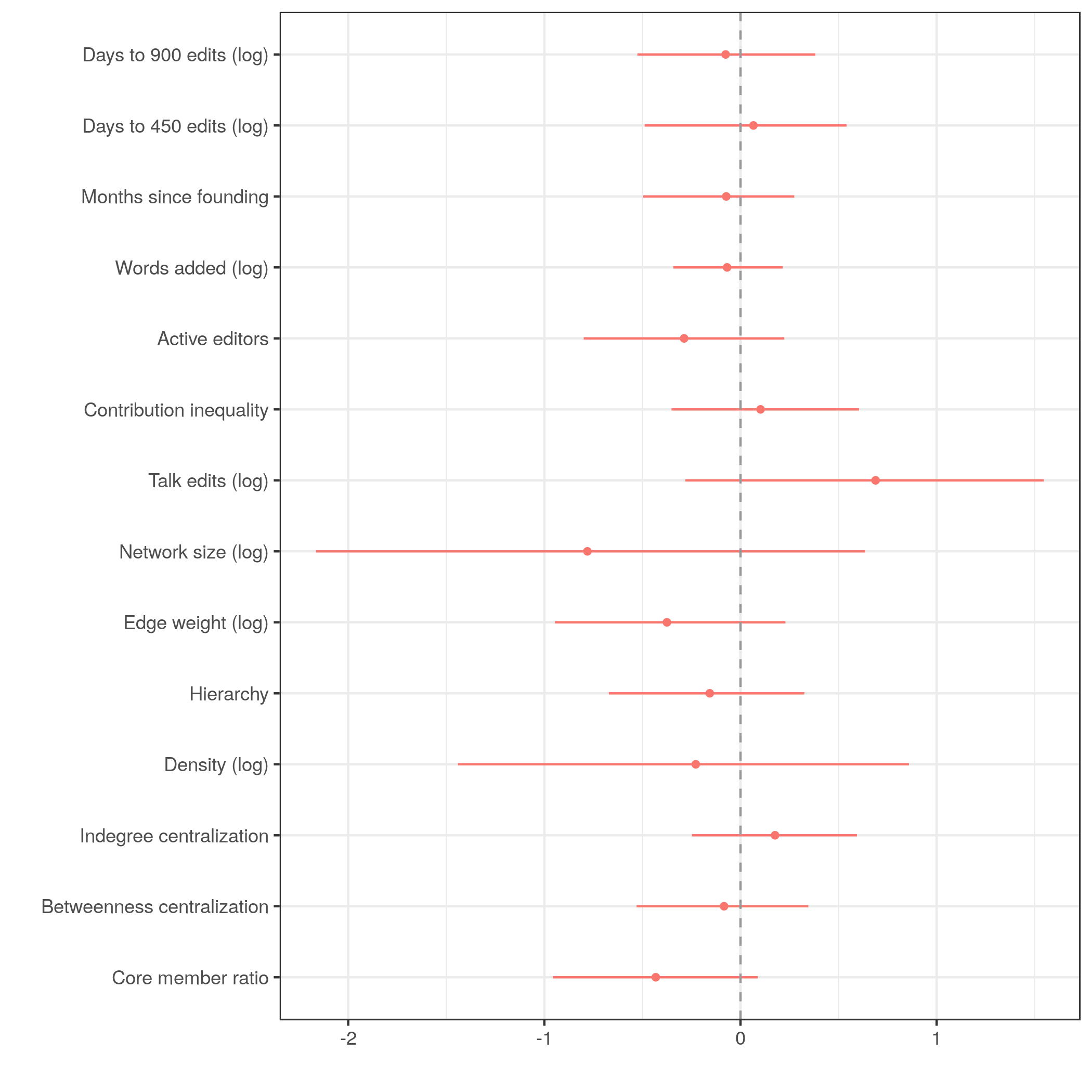
Robustness tests
Dichotomize edges @ 3
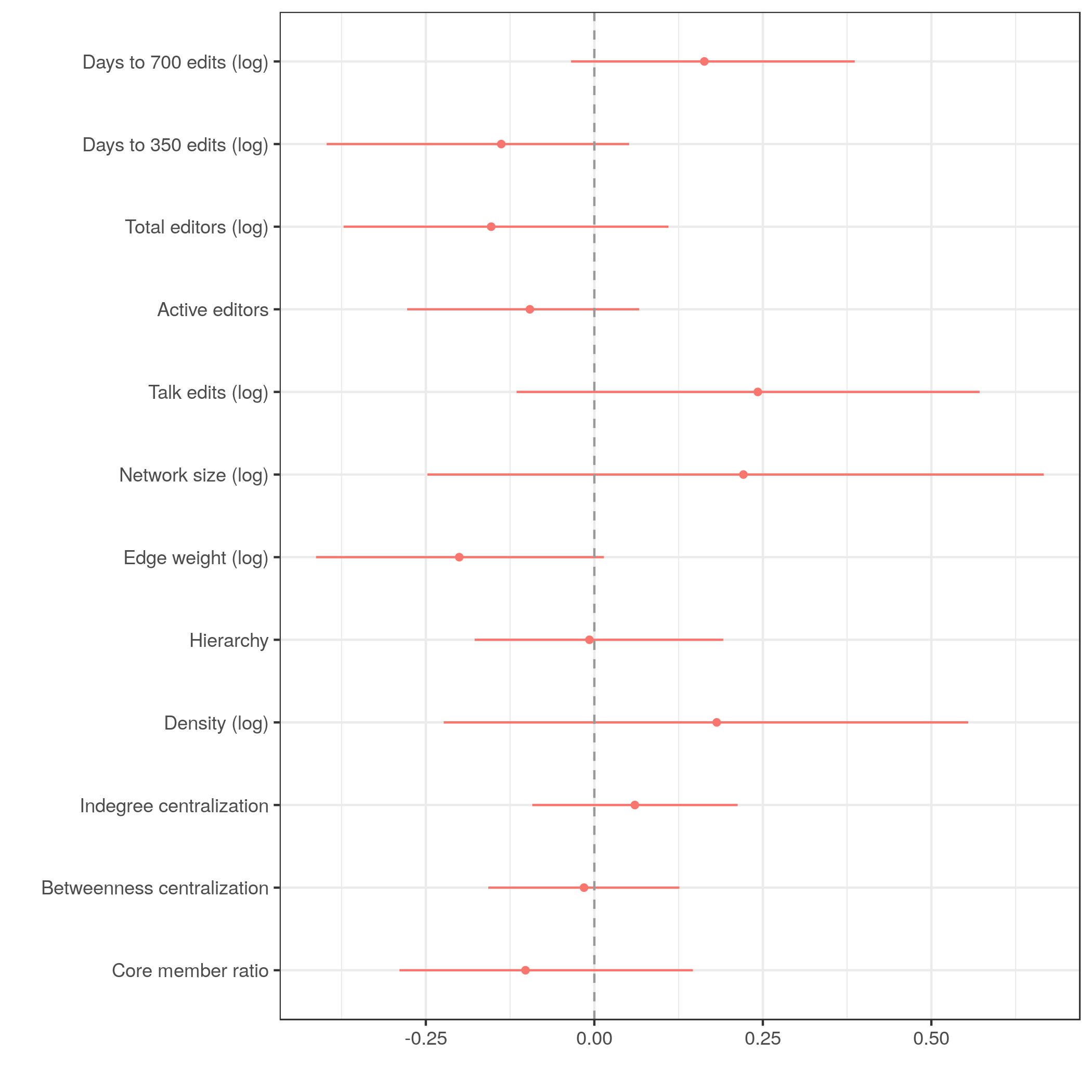
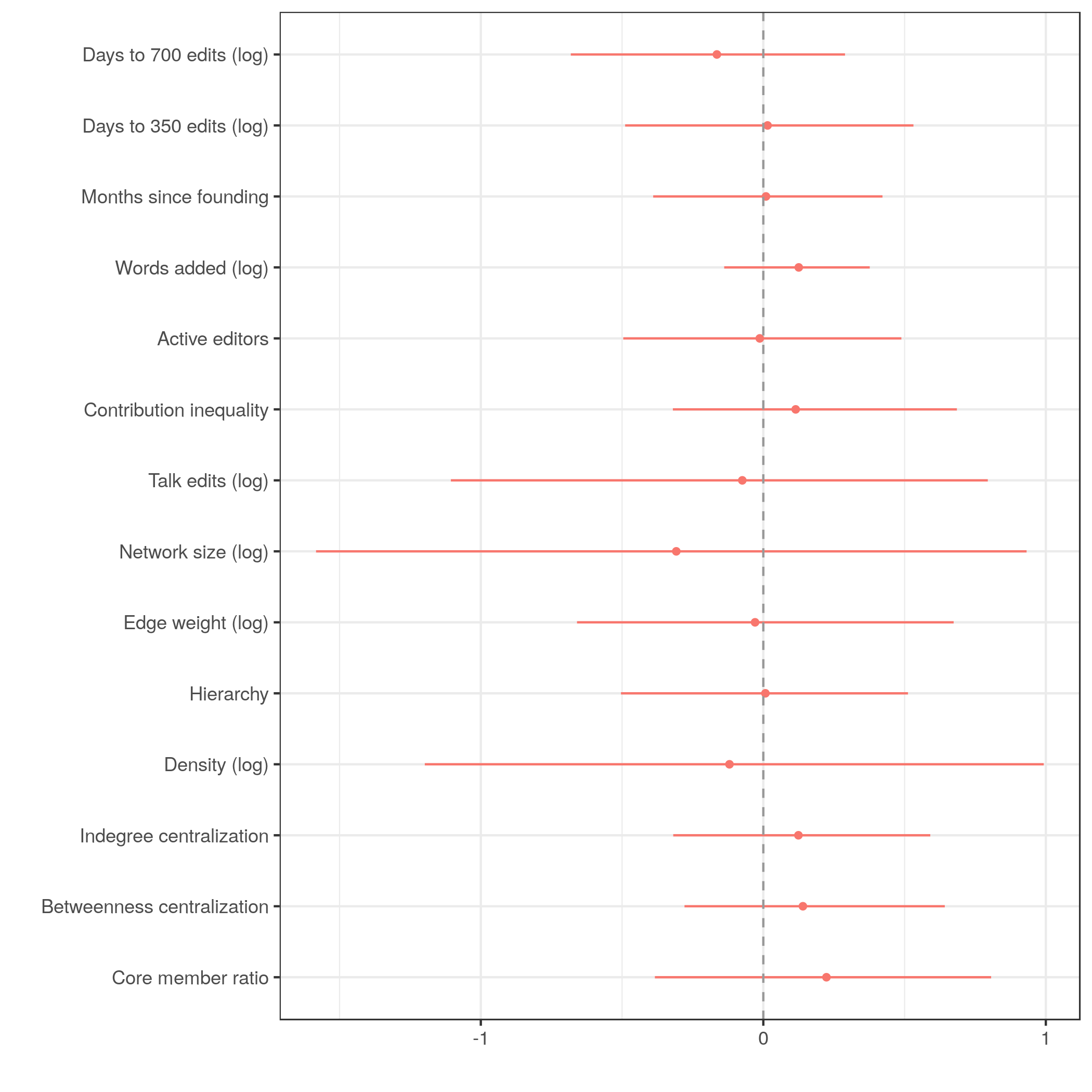
Coreness description
Degenerate graph example
Density with size quartiles
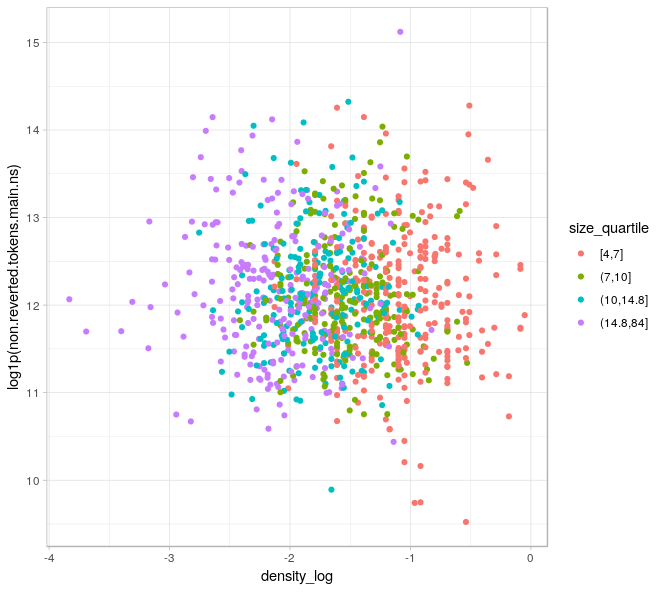
ABM Project
Word of mouth results are fragile
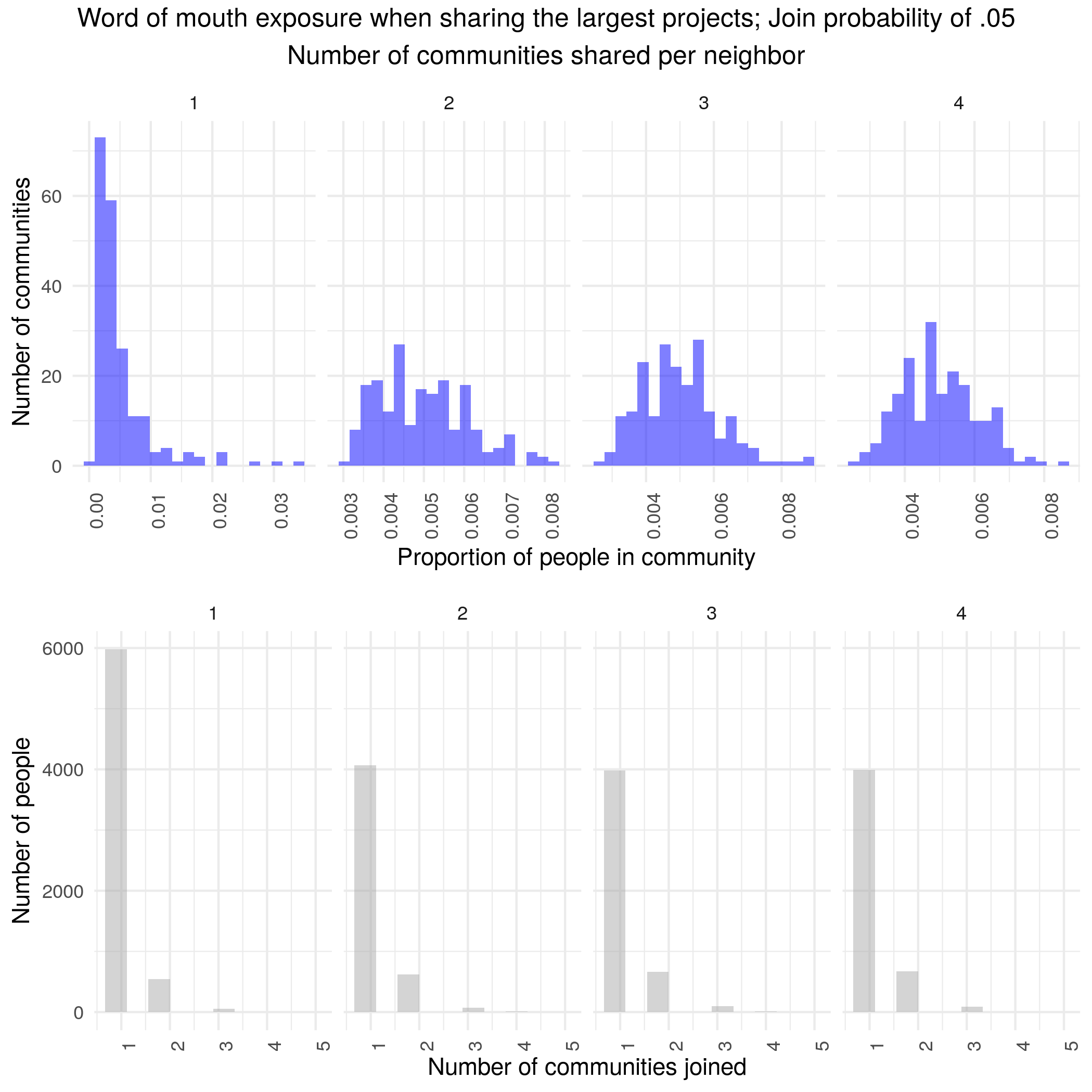
Combined models are much less fragile
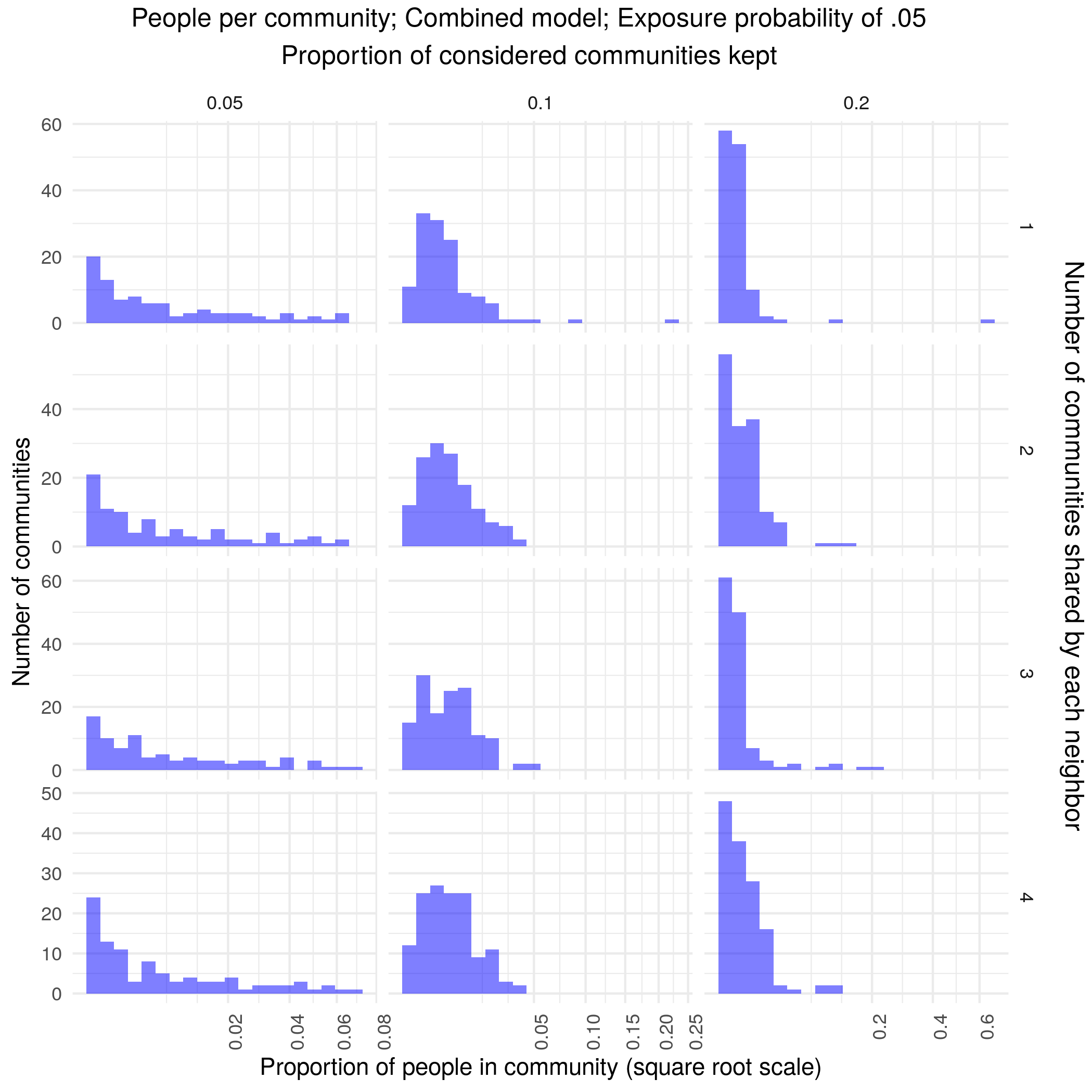
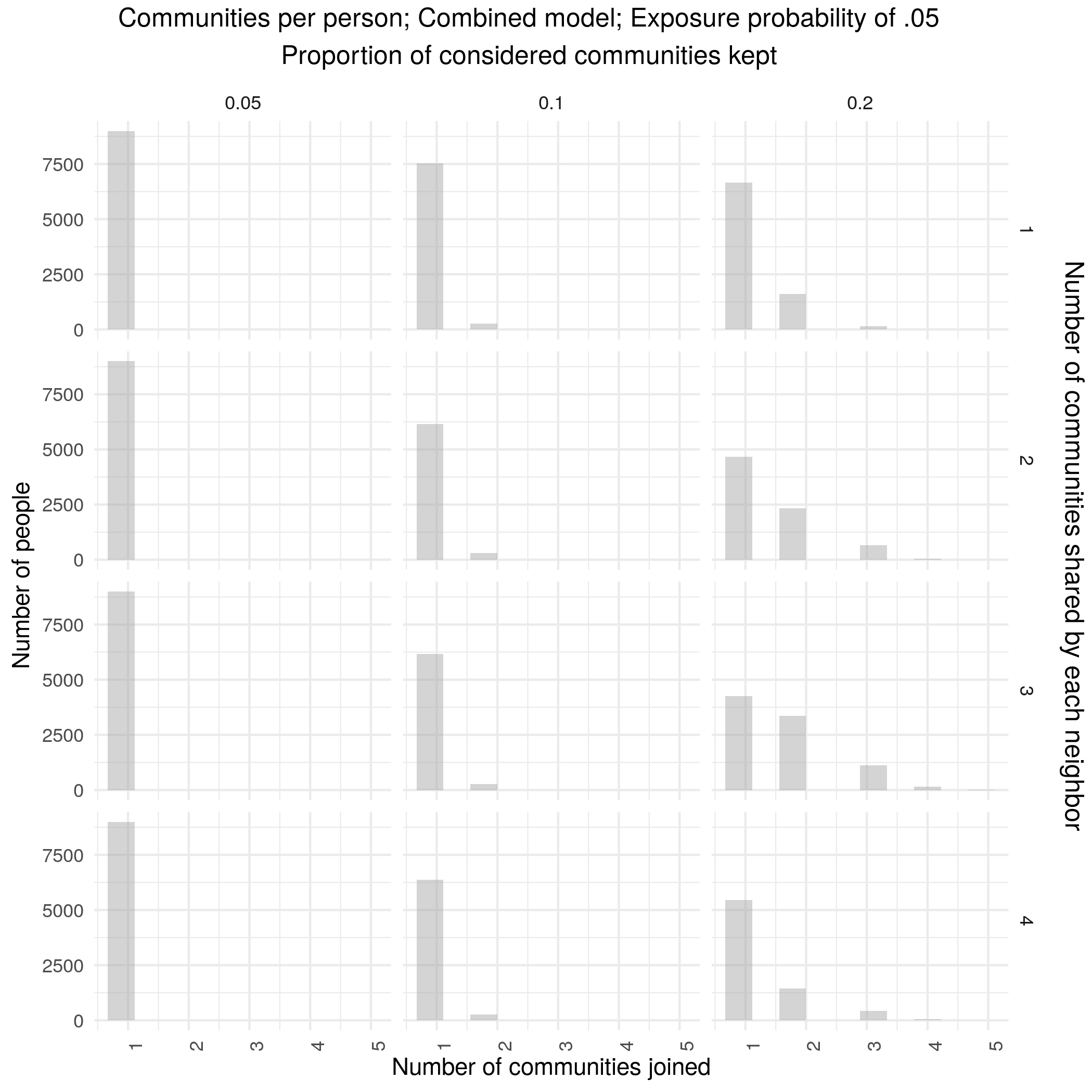
Social exposure and participation processes in online communities